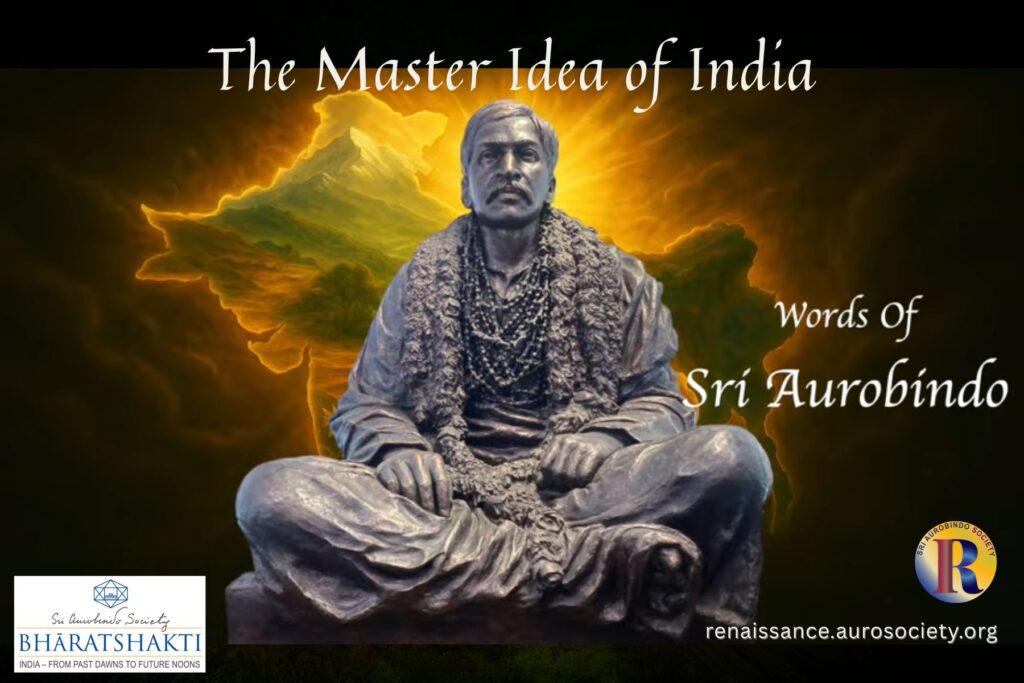Volume III, Issue 3
Author: Satyavrata Bharadwaj
Continued from Part 1

Since 1906, working in Asia, Europe and America, Jatin’s emissaries strove to receive higher education or technical and military training, to stir international sympathy in favour of India’s freedom. Exemplary among them were Taraknath Das and Guran Ditt Kumar from Bantu (both of them had known Sri Aurobindo at the National College). Their endeavour in Canada and in California crystallised a spirit of sacrifice among compatriots, the very nucleus of the future Gadar Movement.
While in prison, Jatin was informed by them about an imminent war between England and Germany. After his release, confiding Kolkata organisations to Atul Krishna Ghosh, he suspended all terrorist action, to concentrate on underground preparations in the districts.
Nixon classified 1911-14 as a period of ‘Temporary Cessation of Activities’: “The fact that outbreak of war provided a splendid opportunity for revolt seems to have struck Jatin Mukherjee very early.”[1] Contrary to Gandhi’s Chauri-Chaura dismay in 1922, this lull proved Jatin’s complete command of the violence he had introduced as an antidote.
During the visit of the German Crown Prince to Kolkata, Jatin had an interview with him and received “an assurance that arms and ammunition would be supplied to them.”[2] Having left San Francisco in May 1913, Kumar informed Tarak about establishing a base in Manila, to “supervise the work near China.”[3] Sent by Atul Ghosh, early 1914, Bholanath Chatterjee and Noni Basu spent several months in Bangkok and Batavia preparing similar bases.
The Berliner Tageblatt in an article on ‘England’s Indian Trouble’ (6.3.1914) disclosed the flourishing revolutionary preparations and secret societies inside India and “in California especially there appears to be an organised enterprise for (…) providing India with arms and explosives.”[4]
Watch: Sri Aurobindo and India’s Freedom
Three Gadar leaders (Jatin’s emissary Satyen Sen with Pingley and Kartar Singh) reached Kolkata in November 1914. In Berlin, Viren Chatto created the ‘German Friends of India Committee’ with industrials and officers of the German Foreign Office and signed a Pact with the Kaiser’s Government on 2.9.1914, to promote a revolution in India.[5] Son of Aghorenath Chattopadhyay (Principal, Nizam’s College, Hyderabad), Viren had known Sri Aurobindo’s revolutionary cousins (viz. Sukumar and Kumudini Mitra) and had maintained contact with them.
On 22.9.1914, N. S. Marathe and Dhiren Sarkar left for Washington to see the Ambassador Bernstorff with the Kaiser’s instruction to pay them 25,000 Marks and to despatch to India, through Von Papen, shipments of arms and ammunition. In December, Jiten Lahiri and Tarak reached Berlin from San Francisco.
Gadar militants in thousands were returning to India for an insurrection. Tegart noted Jatin’s visit with Satyen to the Dakshineswar gunpowder magazine to interview Sikh officers of the 93rd Burmans regiment: “Especially to tamper with the troops.”[6]
***

Soon after Jatin’s meeting J. N. Banerjee, the latter had left for Upper India as a wandering monk under the name of Niralamba Swami, carrying the fire-seeds of revolution received from Sri Aurobindo. His contacts especially with some receptive Indian officers in various regiments and with the Arya Samaj leaders had created a favourable field: two potential leaders—Lala Har Dayal and Rasbehari Bose—were influenced by him.
In 1911, informed by Motilal Roy about Sri Aurobindo’s instruction — “follow Jatin Mukherjee,”[7] — Rasbehari Bose had met him in Kolkata, in the company of Amarendra and kept in view Jatin’s plans for insurrection with the help of the army.
Again, observing the extremists’ reunification under Jatin during the 1913 flood relief, Bose had left his Benares retreat and hastened to learn from Jatin his further plans for the rising. In reply to Jatin’s question, “The Fort William has to be seized. Can you manage it?”, spellbound, Bose is reported to have replied, “Yes, I can.” And he had set to negotiate with an Indian officer of the Fort.[8]
Claiming Jatin to be “a real leader” whose contact “added a new impulse”, Bose had proceeded to make U.P. and Punjab join hands with Bengal.[9] Bringing to his notice the existence of the Mauser pistols stolen from the British gun importers, since 26.8.1914, Jatin had accepted to accompany him to Benares for this mobilisation. Jatin sent Pingley and Kartar to keep Bose abreast of the German assistance.
In January 1915, considering that the Gadar volunteers could not wait for the German aid, they chose 21st February for the general rising from Bengal to Peshawar, with the participation of various regiments.
In urgent need of money for this operation, Jatin devised “a new feature in revolutionary crime”[10] – hold-up on automobile taxicabs. On 12.2.1915, his men intercepted a van leaving the Chartered Bank, and escaped with Rs. 18,000. Heedless of Bose’s failure and determined to minimise it, he succeeded in extorting Rs. 20,000 from a rice merchant on 22.2.1915. On 24.2.1915, surprised during a secret meeting, his men shot dead a spy.
Again on 28.2.1915, an Inspector of Police, posted for the security of the Viceroy, noticed an absconding revolutionary and while trying to chase him, was killed. “By 1915 the situation had become one of unparalleled danger. (…) It was at last recognised that the forces of law and order (…) were inadequate.”[11]
A heavy reward promised for Jatin’s arrest, had no effect: “(…) As he is a man of desperate character and always carries arms, it is difficult to find informers who will watch for him (so the Bengal Government report).”[12]

“The entire international chain was masterminded by Jatin,” claims Bhupati Majumdar. [13] In early March 1915, Jiten Lahiri returned from Berlin to get an emissary sent to the German Consul at Batavia for the delivery of a ship-load of arms. Selecting Naren Bhattacharya for this mission, Jatin chose Balasore to receive the arms and went there to hide away from Kolkata.
According to Jatin’s plans of a pincer operation—and with the Kaiser’s credentials—the Berlin Committee would raise an army of liberation in the Middle East and march through the North-West Frontier; the Gadar men would wait in Bangkok for the Bengali delegation coming via Batavia, train another army and march through Burma, while the postponed rising would flare from Peshawar to Kolkata.
On 9 September 1915, Jatin (with four associates) fought against a detachment of military police, opening the path for the Mass Movement. Another masterly pageant and an instance of a rare selfless strategy. Recognising “their driving power (…) immense”, Tegart would write that if the army could be raised on the Burmese frontier or the ship-loads of arms could reach an Indian port, that would mean the defeat of the British during the World War.[14]

***
Amalesh Tripathi acknowledged the contribution of the Extremists under Jatin Mukherjee as the crystallisation of a will to improve overall (especially economical) status of the people. Judging from the Howrah Case proceedings, it is clear that they added three new dimensions: (a) acquisition of arms from inside the country and abroad; (b) raising a guerrilla army in India; (c) creating simultaneously and on several points an insurrection with the indoctrination of the Indian soldiers.
Having carefully gone through successive chapters on makers of modern India from Rammohun to Sri Aurobindo, professor Emmanuel Le Roy Ladurie—father of the New Wave in History—exclaimed on reading Jatin Mukherjee’s life-sketch: “This is the first chapter where we have a great impression of modernity!” He was reminded of some kind of a Bolshevik organisation: “which is certainly, a pure functional coincidence.”
While meeting Lenin for the first time, aware of Plekhanov’s influence on the Bolshevik view of Marxism, M. N. Roy (alias Naren Bhattacharya) insisted on the similarity between the Russian Populist-cum-Socialist Revolutionaries and the Indian Extremists led by Jatin: they all believed in terrorism and the special genius of their own race; they appealed to the younger generation to return to the village; temporarily, they denounced capitalism as a western vice, unfit for their country (whereas Lenin believed that capitalism as a social revolutionary force was inevitable).[15]
The finding of new material leads us to realise what Sri Aurobindo meant when he spoke of Jatin Mukherjee as “My right-hand man.”
Notes
[1] Terrorism…, Vol. II, pp. 544, 591.
[2] Ibid., p. 625.
[3] J. C. Ker, p. 237.
[4] Ibid., p. 262.
[5] First Spark…, pp. 432-33.
[6] Report No. V, Terrorism…, Vol. III, p. 505.
[7] Cf: Motilal Roy’s article in the special Jatin Mukherjee supplement of the Ananda Bazar Patrika, 9 September, 1947.
[8] Jadugopal Mukherjee, Biplabi Jibaner Smriti, 1956, p. 647 (and several other references).
[9] Two Great…, p. 119.
[10] Rowlatt, § 69.
[11] “Memorandum from 1905 to 1933” in Terrorism…, p. 799.
[12] Letter by Henry Wheeler, on 24.5.1915: I.B. Records/1915, India Office Library, London.
[13] Op. cit.
[14] Tegart MSS, quoted by Amalesh Tripathi, Swadhinata Samgrame Bharater Jatiya Congress, 2nd ed., 1991, p. 78.
[15] M. N. Roy, Memoirs, 1964, p. 381.
Concluded
READ PART 1

~ Design: Biswajita Mohapatra



